Phillip B Baker
age ~87
from Aurora, CO
- Also known as:
-
- Phillip Baker Rv
- Philip Baker
- Phil Baker
Phillip Baker Phones & Addresses
- Aurora, CO
- Columbia, SC
- 116 San Felipe Way, Novato, CA 94945 • (415)7359604
- 119 Ascot Ct, Moraga, CA 94556 • (510)3760348
- 119 Ascot Ct #7, Moraga, CA 94556 • (925)7359604
- Findlay, OH
Work
-
Company:Blue iron, inc - West Sacramento, CAJul 2010
-
Position:Journeyman piledriver/welder
Education
-
School / High School:NCCTC- Pleasanton, CAJan 2004
-
Specialities:Apprentice Endentureship in Piledriver/Welder
Skills
Welding Certification 2G • 3G • 4G (7018) • 2G • 3G • (232 wire feed) • Qualified Rigging Card • Areial Lift Certified • Confined Space trained(quailied) • small and lite equipment trainerd and Qu... • Koba) • Heavy Equipment Rigging In and Out • blueprint reading • and Survey Knowledge
Us Patents
-
Analysis System For Interferometric Scanning Of Donor Corneal Tissue
view source -
US Patent:6594021, Jul 15, 2003
-
Filed:Apr 18, 2000
-
Appl. No.:09/552149
-
Inventors:Phillip C. Baker - Orinda CA
-
Assignee:Eyetech Vision, Inc. - La Jolla CA
-
International Classification:G01B 902
-
US Classification:356492, 356432, 356632, 356440, 356446, 351212
-
Abstract:A system for evaluating a donor cornea includes a light source for generating a beam having a predetermined characteristic and a selected configuration. The light beam characteristic can be collimated light (wavefront analysis), white light (spectral analysis), or polarized light (polarization analysis). The beam configuration can be either circular in cross-section, or it can be a slit. When circular, the light beam is transmitted through the entire cornea to identify changes in the characteristics of the light (e. g. phase shift, spectral shift, or polarization changes). These changes then determine the optical properties of the donor cornea. When configured as a slit, the light is scattered off-axis and used to measure dimensions for a profile of the donor cornea. A computer then prepares an evaluation which includes information on both the optical qualities and the dimensional profile of the donor specimen.
-
Optimizing Vision Correction Procedures
view source -
US Patent:8100530, Jan 24, 2012
-
Filed:Oct 23, 2009
-
Appl. No.:12/605219
-
Inventors:Yan Zhou - Pleasanton CA, US
William Shea - Pleasanton CA, US
Barry Linder - Danville CA, US
Phillip Baker - Walnut Grove CA, US -
Assignee:Clarity Medical Systems, Inc. - Pleasanton CA
-
International Classification:A61B 3/10
-
US Classification:351205, 351211, 351214
-
Abstract:Example embodiments include a dynamic wavefront sensor, a controllable wavefront offsetting element and a controller that controls the controllable wavefront offsetting element to offset selected non-plane wave aberration components in order to allow remaining non-plane wave aberration components to be more efficiently detected and measured.
-
Split View Adapter For A Microscope
view source -
US Patent:8118431, Feb 21, 2012
-
Filed:Oct 27, 2009
-
Appl. No.:12/606982
-
Inventors:William Shea - Pleasanton CA, US
Phillip Baker - Walnut Grove CA, US
Barry Linder - Danville CA, US -
Assignee:Clarity Medical Systems, Inc. - Pleasanton CA
-
International Classification:A61B 3/00
G02C 7/04 -
US Classification:351219, 351160 R
-
Abstract:This invention discloses an apparatus that is attached to the objective lens of a microscope to split its field of view into at least two. In one embodiment, a mirrored gonio lens is snapped to the objective of an ophthalmic surgical microscope to provide a view of the eye's anterior surface and a view of the eye's anterior chamber.
-
Optical Coupling Gel For Eye Imaging
view source -
US Patent:8518109, Aug 27, 2013
-
Filed:Oct 26, 2009
-
Appl. No.:12/606017
-
Inventors:William Shea - Pleasanton CA, US
Barry Linder - Danville CA, US
Phillip Baker - Walnut Grove CA, US
Yan Zhou - Pleasanton CA, US -
Assignee:Clarity Medical Systems, Inc. - Pleasanton CA
-
International Classification:A61F 2/16
A61F 2/14 -
US Classification:623 611, 623 41
-
Abstract:The invention discloses an optical coupling gel that has a set of desired features for application in eye imaging, including being approved for eye contact, optically transparent, able to maintain normal hydration of the ocular surface, flexible and capable of maintaining a distinct shape, minimal in breakdown/change during use, and easily dispensable/applicable. In one embodiment, the gel is made of Sodium Carboxy Methylcellulose (SCMC), where the amount of the cellulose determines the viscosity of the gel for its particular application. The right amount of gel is contained in an applicator for application to one or two eyes.
-
Adaptor For Mounting A Gonio Lens Onto A Hand-Held Eye Examination Device
view source -
US Patent:20100118270, May 13, 2010
-
Filed:Oct 27, 2009
-
Appl. No.:12/606993
-
Inventors:William Shea - Pleasanton CA, US
Shelly Reed - Dublin CA, US
Willem Crone - Oroville CA, US
Barry Linder - Danville CA, US
Phillip Baker - Walnut Grove CA, US
Yan Zhou - Pleasanton CA, US -
Assignee:CLARITY MEDICAL SYSTEMS, INC. - Pleasanton CA
-
International Classification:A61B 3/117
-
US Classification:351219
-
Abstract:An apparatus and method is disclosed that provides a means for mounting a separate optical element, such as a gonio lens, to a hand-held eye imaging device. In this way, the doctor only needs to use one hand to hold the imaging apparatus while the other hand can be freed to open the patient eye lid and also maintain a safe relative distance of the gonio lens with respect to the patient's eye. The gonio lens and adaptor can each or both be made disposable and also mechanically switchable relative to each other as well as relative to the handheld eye imaging device so that different portions of the patient eye can be imaged sequentially without the need to rotate the hand held eye imaging device.
-
Optimizing Vision Correction Procedures
view source -
US Patent:20120188506, Jul 26, 2012
-
Filed:Jan 20, 2012
-
Appl. No.:13/354763
-
Inventors:YAN ZHOU - PLEASANTON CA, US
WILLIAM SHEA - PLEASANTON CA, US
BARRY LINDER - DANVILLE CA, US
PHILLIP BAKER - WALNUT GROVE CA, US -
Assignee:CLARITY MEDICAL SYSTEMS, INC. - Pleasanton CA
-
International Classification:A61B 3/10
-
US Classification:351205
-
Abstract:In one embodiment a wavefront sensor is configured to measure real time aberration values of a wavefront returned from the eye of a patient while an image of the eye of the patient is being viewed by a surgeon during an on-going vision correction procedure and for providing an output signal indicating real time aberration values and a display, coupled to the wavefront sensor, is configured to show a dynamic display indicating the real time aberration values to the surgeon and configured to be viewed by the surgeon while also viewing the image of the eye of the patient during the on-going vision correction procedure.
-
Optimizing Vision Correction Procedures
view source -
US Patent:20130265541, Oct 10, 2013
-
Filed:May 24, 2013
-
Appl. No.:13/902716
-
Inventors:William Shea - Pleasanton CA, US
Barry Linder - Danville CA, US
Phillip Baker - Walnut Grove CA, US -
International Classification:A61B 3/10
-
US Classification:351205
-
Abstract:In one embodiment, a wavefront sensor is combined with a slit lamp eye examination device so that real time aberration values of an eye being examined can be viewed during a slit lamp eye examination session.
-
Method And Apparatus For Measuring Corneal Incisions
view source -
US Patent:61252948, Sep 26, 2000
-
Filed:Aug 6, 1997
-
Appl. No.:8/907112
-
Inventors:John Anthony Scholl - Danville CA
Thomas A. Silvestrini - Alamo CA
Isidro Matias Gandionco - Fremont CA
William P. Kuhn - Tucson AZ
Phillip C. Baker - Orinda CA -
Assignee:Kera Vision Inc. - Fremont CA
-
International Classification:A61B 500
-
US Classification:600407
-
Abstract:A method and apparatus for performing a surgical procedure on a patient is described. An incision is made into tissue of the patient to create a tissue pocket. The tissue has an anterior surface. Preferably, the tissue is corneal tissue of an eye. A reflective element is inserted into the pocket. An energy source generates a radiant energy signal, which is directed toward the reflective element. Reflected energy is received from the reflective element. A detector determines the depth of the reflective element below the anterior surface based upon the energy reflected by the reflective element. The speed of transmission of the radiant energy in the reflective element is different (preferably slower) than the speed of transmission of the radiant energy in the tissue. The reflective element may be in the form of a tool on which is disposed a biocompatible polymer layer, the layer comprising trapped air spaces, or a tool having an open space for containing trapped air. The radiant energy may take the form of ultrasound generated by an ultrasonic probe, or light generated by a confocal microscope.
Isbn (Books And Publications)



Immunology of Bacterial Polysaccharides: Proceedings of a Symposium Presented at the Annual Meeting of the American Society for Microbiology, Las Vegas, Nevada, 16 May 1978
view sourceAuthor
Phillip Baker
ISBN #
0444003150

Emerging Infectious Diseases: A Peer-Reviewed Journal Tracking and Analyzing Disease Trends; West Nile Virus
view sourceAuthor
Phillip J. Baker
ISBN #
0756716020
Medicine Doctors

Phillip D. Baker
view sourceSpecialties:
Diagnostic Radiology, Cardiothoracic Radiology
Work:
Diagnostic Imaging Northwest PC
1015 NW 22 Ave STE T-240, Portland, OR 97210
(800)8786698 (phone), (503)4138169 (fax)
1015 NW 22 Ave STE T-240, Portland, OR 97210
(800)8786698 (phone), (503)4138169 (fax)
Education:
Medical School
University of Utah School of Medicine
Graduated: 1993
University of Utah School of Medicine
Graduated: 1993
Languages:
English
Description:
Dr. Baker graduated from the University of Utah School of Medicine in 1993. He works in Portland, OR and specializes in Diagnostic Radiology and Cardiothoracic Radiology. Dr. Baker is affiliated with Good Samaritan Regional Medical Center, Legacy Good Samaritan Hospital & Medical Center and Legacy Mount Hood Medical Center.
Name / Title
Company / Classification
Phones & Addresses
Owner/Manager
Raleighwood Interiors
Floor Laying. Refinishing & Resurfacing
Floor Laying. Refinishing & Resurfacing
7752 Raleigh St, Westminster, CO 80030
President
Centennial Automotive Repair Center Inc
General Automotive Repair Services
General Automotive Repair Services
302 S Mccaslin Blvd, Westminster, CO 80027
(303)6739340
(303)6739340
President
Corner Mechanic Inc
General Auto Repair · Auto Repair
General Auto Repair · Auto Repair
703 6 St, Denver, CO 80403
703 6 St, Golden, CO 80403
703 6 Ave, Golden, CO 80403
(303)2791145
703 6 St, Golden, CO 80403
703 6 Ave, Golden, CO 80403
(303)2791145
Principal
Doughtys Falls Restaurant
Eating Place
Eating Place
876 Is Pt Ln, Lake Murray, SC 29036
Owner, Owner/Manager
Raleighwood Interiors
Floor Laying Contractor
Floor Laying Contractor
7752 Raleigh St, Westminster, CO 80030
(303)6501801
(303)6501801
LASATEN PROPERTIES LTD
BAKER BROTHERS FLOORING COMPANY
THE BAKER GROUP LLC
Resumes

Retired
view sourceLocation:
Aurora, CO

Phillip Baker
view source
Phillip Baker
view source
Phillip Baker
view sourceLocation:
United States

Phillip Baker
view sourceLocation:
United States

Phillip Baker
view sourceLocation:
United States

Phillip Baker
view sourceLocation:
United States
Classmates

Phillip Baker
view sourceSchools:
Central Fellowship Christian Academy Macon GA 1974-1978
Community:
Elaine Hall, Monifa Brooks

Phillip Baker
view sourceSchools:
Lovejoy High School Lovejoy GA 1990-1994
Community:
Mickie Lang, Aaron Wright, Michael Cager, Brittany Rutherford

Phillip Baker
view sourceSchools:
Manhattan Academy Jackson MS 1974-1978
Community:
Cynthia Galbreath, Angela Hames, Beth Kates, Johnney Alford

Phillip Baker
view sourceSchools:
Fruitville Elementary School Sarasota FL 1981-1986, Sarasota Middle School Sarasota FL 1987-1989, Brookside Middle School Sarasota FL 1989-1990
Community:
Angela Rush, Bobbi Patterson, Sheryl Wagoner

Phillip Phillip Baker
view sourceSchools:
Thonotosassa Elementary School Thonotosassa FL 1980-1984
Community:
Christine Saunders, Sherry Ellis, Elizabeth Ownley, Ginny Foster, Mark Mcmahan

Phillip Baker
view sourceSchools:
Fowler High School Fowler CA 1996-2000
Community:
Carolyn Henderson

Phillip Baker (Wilkins)
view sourceSchools:
Myers Middle School Louisville KY 1998-2001, Brown High School Louisville KY 1999-2000
Community:
Ryan Yates, Rick Marion, Latoya Lewis

Phillip Baker
view sourceSchools:
Timpson High School Timpson TX 1960-1964
Community:
Gloria Rutherford, Robbie Bigham, Cecil Hubbard, James Jim

Colin Phillip Baker
view source
Phillip Allcott Baker
view source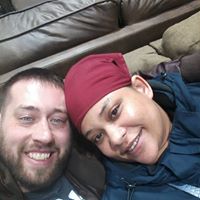
Phillip S Baker
view source
Phillip Baker
view source
Phillip Baker II
view source
Phillip Baker
view source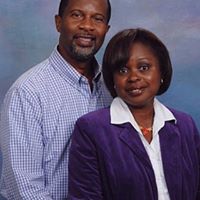
Phillip A. Baker
view source
Phillip Baker
view sourceYoutube
Myspace
Googleplus
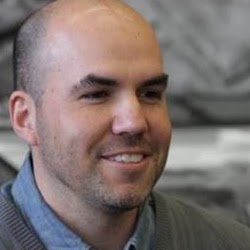
Phillip Baker
Work:
US Air Force Reserves - Civil Engineer
About:
Just looking for some great places to go.

Phillip Baker
Work:
Phil's photo fix - Photographer (2010)
About:
Hi im Phillip and I am a Photographer at Phil's Photo Fix
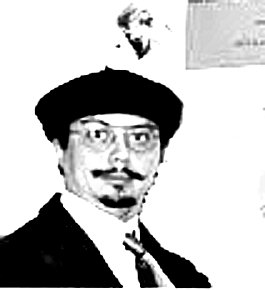
Phillip Baker
Work:
Conseil Européen pour la Recherche Nucléaire
Education:
Massachusetts Institute of Technology
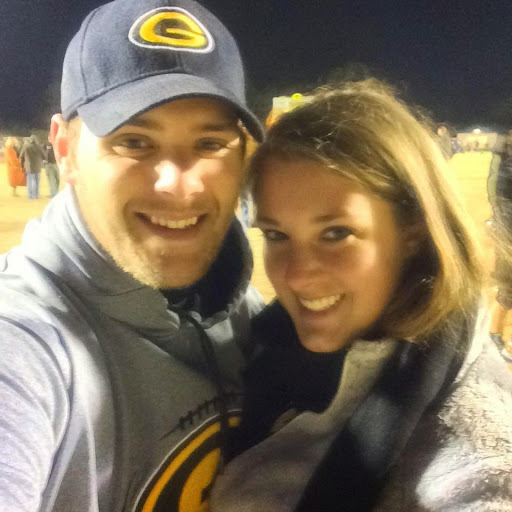
Phillip Baker
Education:
University of South Carolina Upstate - Secondary Education
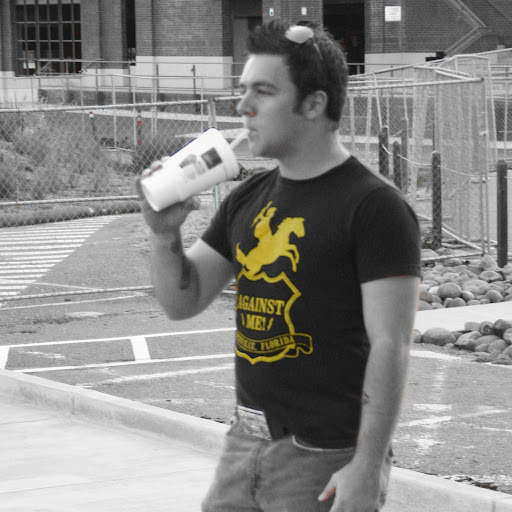
Phillip Baker
Work:
Global Financial Aid - Subject Matter Expert
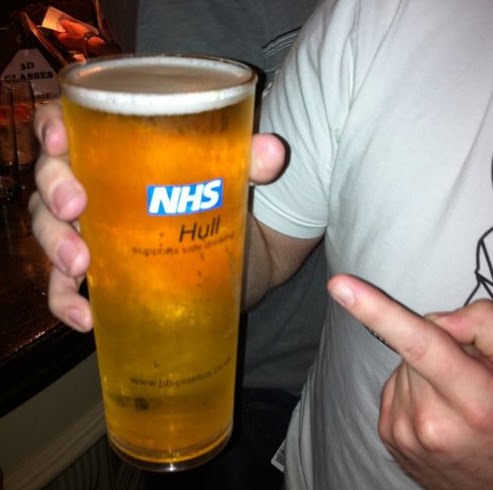
Phillip Baker
About:
Phil @ LCHost - Purveyors of fine Internets.
Tagline:
I break and fix things in equal measure.

Phillip Baker
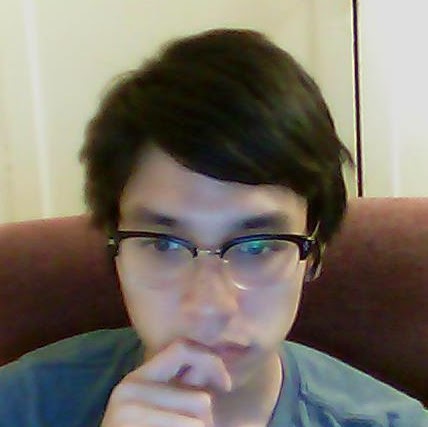
Phillip Baker
About:
I'm good at a few things I guess.
Bragging Rights:
LOL
Flickr
News

Archive: Chronic Lyme disease: Is it real?
view source- "I will certainly miss all of you people the scientists," Phillip Baker, theLymeprogram officer, wrote a colleague in 2007 at the U.S. Centers for Disease Control and Prevention, "but not," he said, "theLymeloonies."
- Date: Jun 24, 2016
- Category: Health
- Source: Google

Study: longer-term antibiotics won't ease chronic Lyme disease
view source- Phillip Baker is executive director of the American Lyme Disease Foundation. He said the results of the new study mesh with results of four U.S. National Institutes of Health-supported clinical trials that showed extended antibiotic therapy was of no benefit for the treatment of Lyme disease syndrom
- Date: Mar 30, 2016
- Category: Health
- Source: Google

Texas gas town in revolt: City that has long drawn lifeblood from drilling might ...
view source- which has one of the largest mineral holdings in Denton, stands to lose about $1.75 million a year if it's barred from fracking on its former cattle ranch. Chief executive Phillip Baker insists that fracking is the only process capable of retrieving gas from the mineral rights held by Rayzor and others.
- Date: Jun 19, 2014
- Category: Business
- Source: Google

It could be a long tick season in affected areas; tips for staying safe
view source- If youre engaged in outdoor activities and you do regular tick checks, youll be able to find them, said Phillip Baker, executive director of the American Lyme Disease Foundation. Once they take a meal, they get bigger. If theyre still there the next day and its still less than 48 hours, you c
- Date: May 01, 2012
- Category: Health
- Source: Google
Plaxo

Phillip A. Baker
view sourceValley Forge Christian College

Phillip Baker
view sourcePhoenix, AZ

Phillip Baker
view sourceJBI
Get Report for Phillip B Baker from Aurora, CO, age ~87



















